Here is Southern California the cane berries are ripening. We planted a cutting last year, and the reward has been sweet so far. We’ve been nibbling on a few blackberries each day.
The question always comes up: How do you know when to harvest? Here is a simple primer.
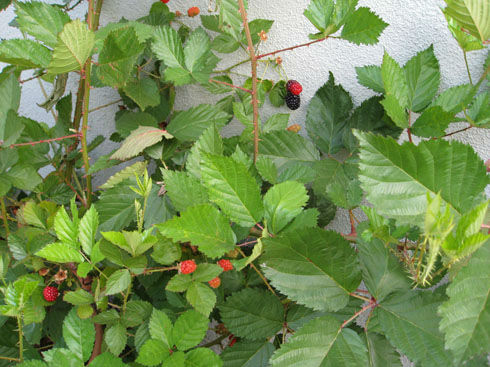
Blackberries produce fruit on second-year canes
Color – blackberries are dark when ready, but let’s take a look at how dark.
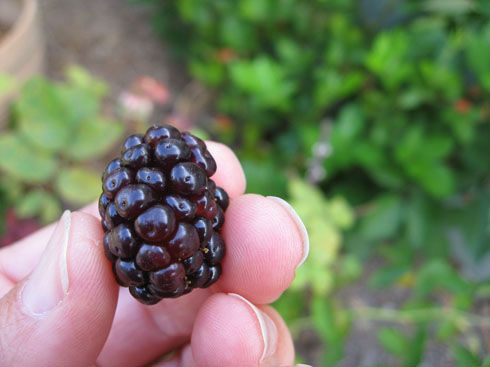
Not ripe
The berry above still shows evidence of deep crimson, it’s not completely black. The taste test proved that it wasn’t ripe – sour enough to make a mouth pucker.
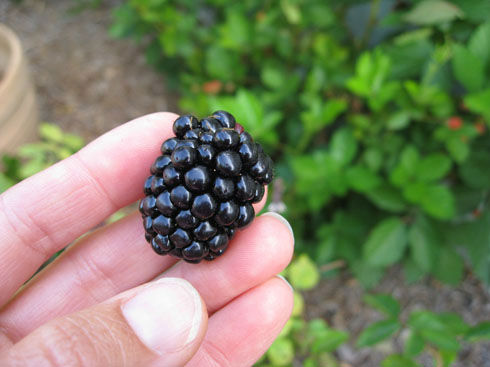
Ripe and ready
The berry above, however, is deep black and ready to eat.
Touch – Ripe berries will give a little to the touch whereas unripe berries will be very firm.
Harvesting – Blackberries should slip off the vine easily when ripe. Similarly to how you pick a tomato, take the berry between index finger and thumb, and rock the fruit away from you. If it’s ripe it should separate easily. If it doesn’t, leave it there for another day. It will be sweet tomorrow.
Thorns – most cane berries have nasty thorns, so enter at your own risk. Keep your berry patch in good order (tip/prune the ends and dig out runners) so that you don’t have to venture in to a bramble. There are thornless varieties available to make the task less life-threatening.
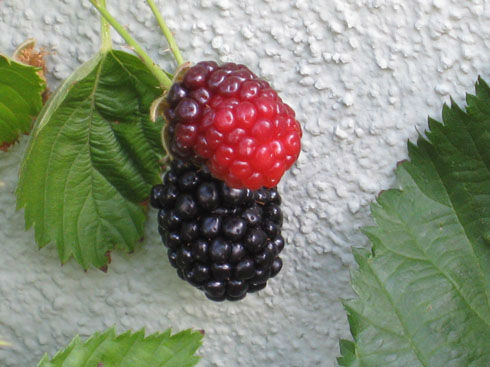
Blackberries as they ripen
It has been recommended to tie a string or clip a clothes pin around the canes which bear fruit, because those canes will need to be cut down at the end of the season. But we’ll go into detail about that in the fall.
Mangia – whether you only have a handful, or a bountiful basket, blackberries go well with the other fruits of summer. Mix with strawberries and yogurt, toss in a few nuts and you’ve got breakfast.
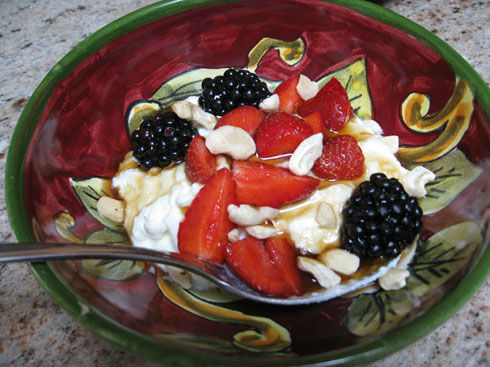
Home grown strawberries and blackberries with home made yogurt, raw cashews and maple syrup
What’s your favorite way to enjoy blackberries? Share your tips with us here.

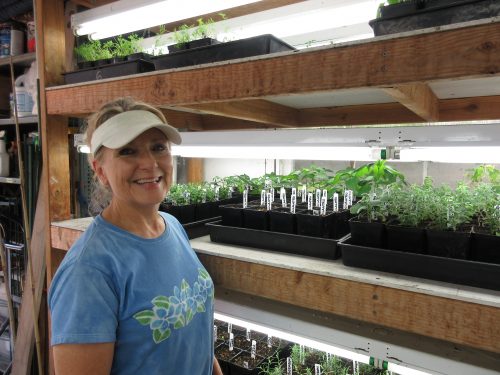


Pingback: YouTube: Pruning Blackberries in 3 Steps - Gardenerd